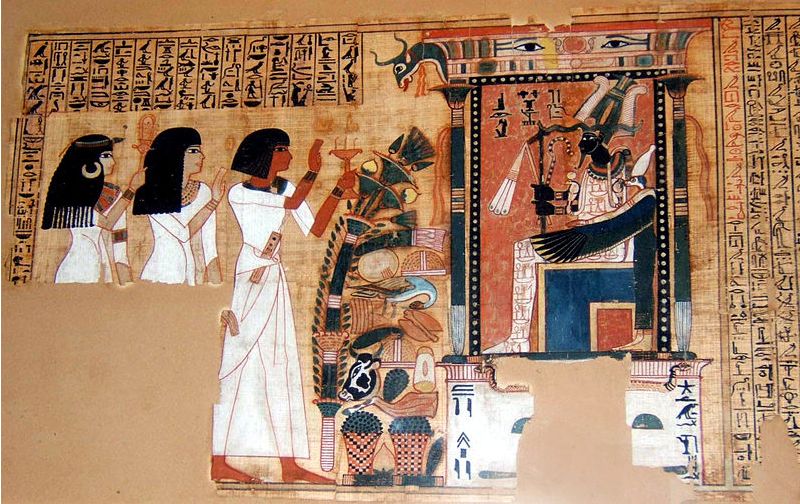|
REEDS >> Intelligence concerning a just standard of life
 Somewhat like grasses in general appearance, but usually growing rank, by the streams and in wet places, are the reeds and rushes of many kinds. Among the rushes, we will for the present purpose include the sedges. The Biblical term includes both; and here, where we are trying only for general ideas, only the general characteristics common to both will be mentioned. They are too coarse for food for the domestic animals, but are sometimes used for bedding and litter for them. Before the introduction of woven carpets, rushes were strewn upon the floors even of palaces, to protect them from filth. There is even an indication that the outer court of the temple at Jerusalem, where they were selling oxen and sheep and doves, was thus strewn; for the expression for a “scourge of small cords,” with which the Lord drove them all out of the temple, means primarily a scourge of twisted rushes. Scouring rushes were also used, and are still used in some places, for soap and sand. Somewhat like grasses in general appearance, but usually growing rank, by the streams and in wet places, are the reeds and rushes of many kinds. Among the rushes, we will for the present purpose include the sedges. The Biblical term includes both; and here, where we are trying only for general ideas, only the general characteristics common to both will be mentioned. They are too coarse for food for the domestic animals, but are sometimes used for bedding and litter for them. Before the introduction of woven carpets, rushes were strewn upon the floors even of palaces, to protect them from filth. There is even an indication that the outer court of the temple at Jerusalem, where they were selling oxen and sheep and doves, was thus strewn; for the expression for a “scourge of small cords,” with which the Lord drove them all out of the temple, means primarily a scourge of twisted rushes. Scouring rushes were also used, and are still used in some places, for soap and sand.
Plants of this nature, and fit for such uses, cannot correspond to truth that teaches about heaven, or heavenly life, nor even to such as teaches about good uses in this life; but they may correspond to the teaching of decency and decorum, of what is fit and becoming, or unfit and not to be done. This is evidently the meaning of rushes upon the floor, to say that it should not be defiled; of rushes for litter and of scouring also, and of the scourge with which the Lord drove from the temple court those who were defiling it. In reformation this lowest use must first be done, and then it gives place to the teaching of positive good uses. The promise of “grass for reeds and rushes” relates to “the establishment of the Church by the Lord; and that then there will be knowledge by means of the Divine Truth natural to those who had before only sensual truth, is signified by grass for reeds and rushes. Grass signifies knowledge from a spiritual origin, or by which spiritual truth is confirmed; but reeds and rushes signify knowledge from a sensual origin, or by which the fallacies of the senses are confirmed. This knowledge, regarded in itself, is only the lowest of natural knowledge, called material and corporeal, in which there is little or nothing of life” (Apocalypse Explained #627).
As we have been speaking of it above, it is suchknowledge of the best kind, showing what is not fit and decent; but the standard of what is fit and decent may have its origin either in the eternal truth, or in the conventionalities of the time, which exalt many artificial and foolish things, and make wholesome and natural ways improper. The “dragons” are they who externally are in appearances of good, but internally wicked. They lie and are at rest among those who judge only by appearances, and by a literal compliance with the precepts of the Word, though its spirit is wholly disregarded.
THE PAPYRUS
 |
The noblest of the sedges is the Papyrus, from which in old time paper was made. It was once abundant, and was extensively cultivated, in Egypt, and is found now in the Sudan, also by the Sea of Galilee and Lake Huleh. The accounts of the process of making paper from it differ somewhat; but it was probably made by slicing the pith, and laying the slices side by side, and then placing another layer upon and across them, and pressing and drying the whole.
For the communication of thought by writing,it is necessary to assume some common plane of thought, some common standard in relation to the things to be told; or else they either cannot be told at all, or will be received in imperfect and distorted forms. And that common plane or standard of thought, which serves as a basis for the communication of definite ideas, is like the paper upon which characters are written. The noblest of the sedges, which represents a comprehensive knowledge of the standards of life and thought, furnished a suitable material for papermaking, in a primitive age when the standards were fairly natural.
The ark in which Moses was placed by his mother was “an ark of bulrushes,” no doubt papyrus; because Moses represents the Divine law which was to be revealed through him; and this Divine law was to be brought down to the standard of life of the Egyptians and the Israelites; and the knowledge of that standard is represented by the ark of papyrus. It might also be represented by the book in which Moses wrote the law, which also was undoubtedly of papyrus (Deuteronomy 31:24; Arcana Coelestia #6723). It was by the ark that Moses was kept alive, as was the Divine Truth by its being embodied in the morals and customs of the Jews. Without such embodiment it could not have been preserved; which was represented also by the breaking of the first tables of stone, and the necessity for the hewing out two others at the foot of the mount. These stones, however, represent the facts of the representative history, and the papyrus ark the plane of moral and natural life, in which the truth was embodied.
REEDS FOR PENS AND MEASUREMENT
The paper was made of rushes, and the pens were made of reeds. Reeds also, because they were straight, jointed, and light to carry, made convenient rods for measurement. Measuring reeds are several times mentioned in the Scriptures.
Of these Swedenborg says:
Divine Truth in the lowest degree, or in the ultimate of order, is such as is the Divine Truth in the sense of the letter of the Word, for children and the extremely simple. . . . This Divine Truth is what is signified by a reed or a cane. And because explorations are effected with all by means of this lowest Divine Truth, . . . therefore measurings and weighings, in the representative churches, were performed by reeds or canes, by which that Divine Truth was signified. (Apocalypse Explained #627)
That definite ideas either of abstract truths or of history may be conveyed, there must be not only a knowledge of the common plane of thought and life, but a standard of what is right, or is assumed to be right, by which the quality of statements, persons, or events may be measured, and in relation to which they may be described. And this standard gives form to the record, like a pen upon the paper—the ink merely fixing that form, certifying to the truthfulness of the record to the measurement or the estimate. The reed with which John was commanded to measure the temple of God represented the standard of the acknowledgment of the Divine Human of the Lord and the life according to the commandments, by which the Christian heaven was to be measured. Divine measurements are always made by a knowledge of the plainest Divine truth; and the record of them has form from their agreement or disagreement with that truth—the truth says they are so, or so. But human measurements and records of measurement, are according to human ideas of right and wrong, which may be the revealed standards or some very different standards. So far as they are the same, their record is in agreement with that in the Book of Life; but so far as they differ, they give false and deceptive measurements. “A reed shaken with the wind” the teaching of the letter of the Word is called, because the letter can be so turned hither and thither, and made to confirm various opinions.
If it be desired to mark the distinctions between the three families just described, it seems reasonable to regard the rushes as intelligence concerning what ought not to be done; the sedges as intelligence about what is done, or life as it is; and the reeds as intelligence concerning a just standard of life, and the measurement of other standards by it.
SWEET CANE
A sweet or aromatic cane is also mentioned in the Word, and was one of the ingredients of the holy anointing oil, with which the priests and all the sacred things of the tabernacle were anointed, and by virtue of which they were made holy, and representative of the Divine Human of the Lord. By this aromatic cane, we are taught, is signified “the perception and affection of interior truth” or “exterior truth in the internal man” (Arcana Coelestia #10256). Sweet odors signify what is delightful from spiritual affection; and this, applied to a reed, may signify the delight of agreement of the natural life and thought with the Divine truth, or the Divine standard of good and evil. This delight the Lord had in saying, “I do always those things that please Him” (John 8:29); “the Son can do nothing of Himself but what He seeth the Father do; for what things soever He doeth, these also doeth the Son likewise” (John 5:19).
Author: JOHN WORCESTER 1875
|
|